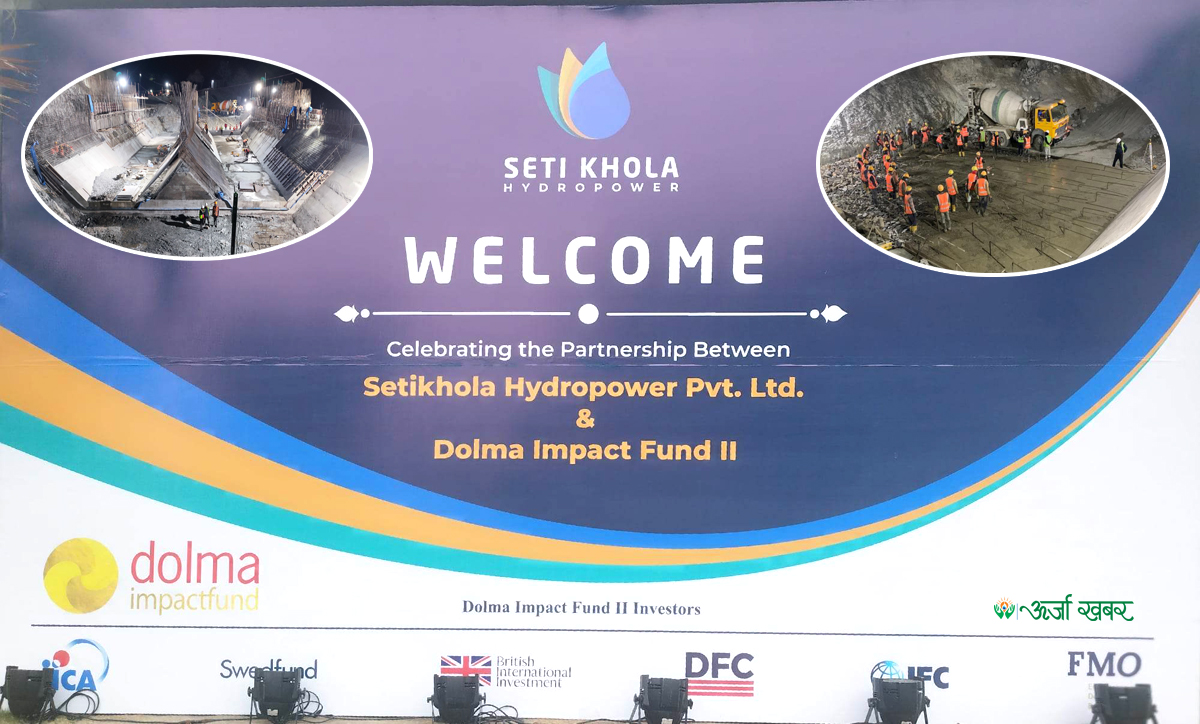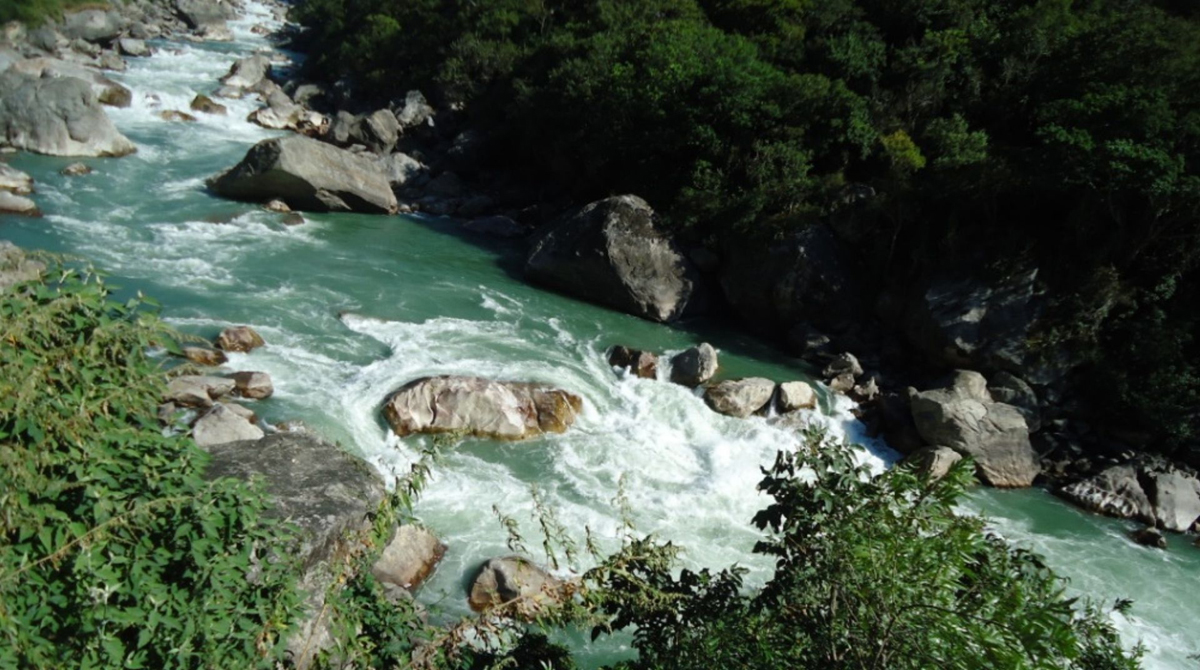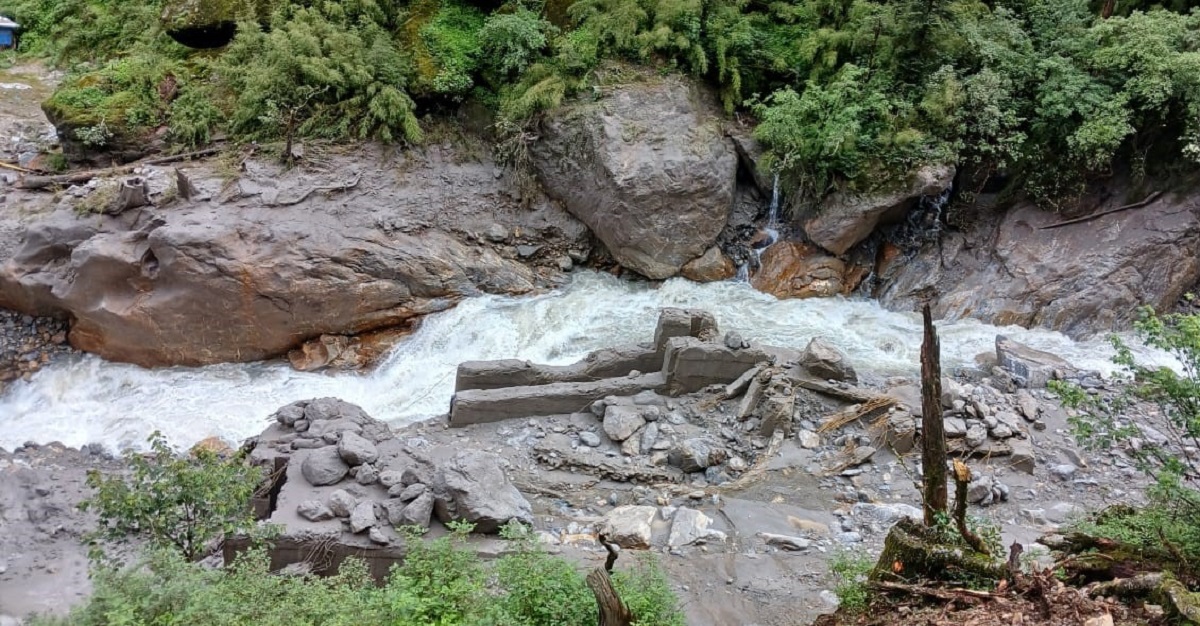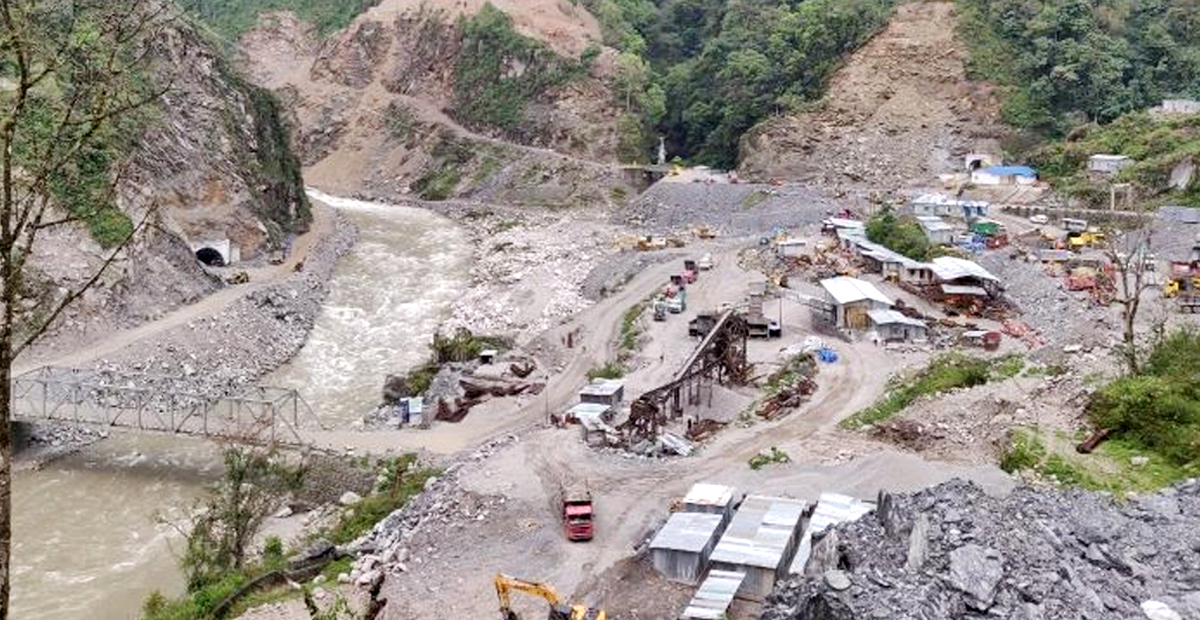Energy Update
Dolma Impact Fund injecting Rs 450 million equity investment in 22 MW Seti River Hydro Project

Kathmandu; Dolma Impact Fund, the international private equity fund, is all set to invest more than Rs 450 million (3.5 M USD) in the 22 MW Seti Khola Hydropower Project.
The company through its second private equity fund named ‘Dolma Impact Fund II’ is investing its own capital in the project, which is being constructed by Seti Hydro Power Pvt Ltd in Musetoda of Kaski district.

Of the estimated cost of Rs 5.50 billion for the hydel project, 75 percent will be generated from loans, while the remaining 25 percent will be managed from equity capital. According to Dolma Impact Fund, the company has decided to invest 49 percent of the equity, while 30 percent will be collected from the general public and the rest will be contributed by the founders.
Bidhyabaridhi Sigdel, managing director of Dolma Fund, said the company is injecting its largest equity investment in this hydropower project. "This organization is focused on private equity investment in Nepal. We are discussing with developers about investing in other energy projects as well," said Sigdel speaking at a program on Friday. "We believe that our support will play some role in the country's long-term goal of developing mixed energy."

Gyanendra Dhungana, chief executive officer of Nabil Bank, said Seti Khola is an attractive project, so the bank also recommended Dolma Fund to invest its own capital. "The finding of the study carried out by the bank is similar to the one seen in the report of Dolma about the project," he said.
In the program that honored British Ambassador Nicola Kathryn Pollitt as its chief guest, the company chairman Anup Acharya said that Seti Khola being a commercial company, has emphasized hydropower development to help reduce the impact of climate change. "Since we have a competent and professional group, we are committed to completing the construction on time," he said.
According to Acharya, they have equally taken into consideration the aspects of social development and the environment, while developing the project.
Ujjal Regmi, head of the Seti River Hydropower Project, informed that around 43 percent of the work of the Q42 designed project has been completed so far. "We are receiving adequate support from investment partner banks. Even at the present moment of economic slowdown, we do not have to face a shortage of funds," he told Urja Khabar.
Regmi, said out of the 3,100 meters of headworks and headrace tunnels required for construction, 1,450 meters have been completed. "Under the headworks, most of the tasks have been completed, while 85 percent of the sand pond has been done," said Regmi, adding that they have expedited construction of the power plant targeting to complete the project within the stipulated time.
Under the consortium led by Kumari Bank Limited, Nabil Bank and Nepal Infrastructure Development Bank are among the main investors of the project. The feasibility study shows that the project will produce 133 million units of electricity annually.
For the evacuation of the produced electricity, a 1.5 km long transmission line will be connected to the 132 kV Lekhnath-Damauli via 'loop in loop out' technology. The project is scheduled to be completed in July 2024.
Conversation
- Info. Dept. Reg. No. : 254/073/74
- Telephone : +977-1-5321303
- Email : [email protected]














